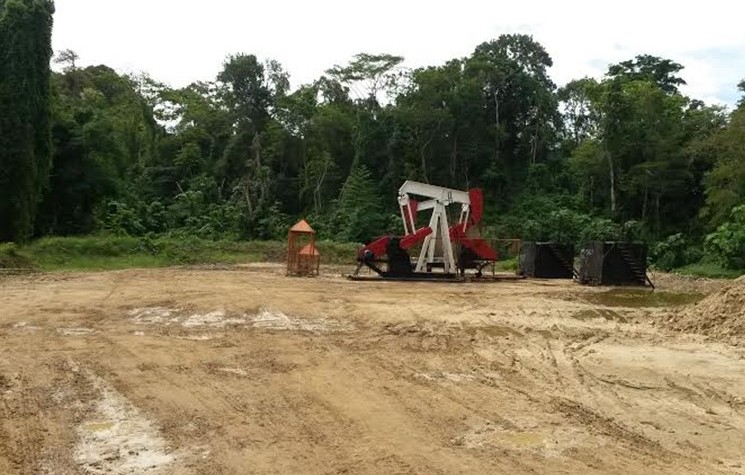Trinity Exploration & Production’s latest update smacks of excitement about the upside while recognising the need for costs control

By Stewart Dalby
Speaking at an Oilbarrel conference last November Joel “Monty” Pemberton, CEO of AIM-listed Trinity Exploration & Production said that, the tiny nation of Trinidad, with massive offshore gas reserves, was propelled to become the methanol power house of the world, the sixth largest LNG exporter in the world and a partner to world-class oil and gas companies: Trinidad accounted for almost a third of BP’s gas production in 2013.
The oil majors dominate Trinidad’s oil and gas sector but this means significant reserves are being left fallow as they don’t meet the materiality threshold of these corporate behemoths. As Monty pointed out, when BP is producing 2.2 BCF of gas per day, it isn’t interested in any reserve pool of less than 1 TCF.
This means there’s a real need to cultivate a thriving independent sector with an appetite to take on these stranded reserves in order to reverse the nation’s decline in both oil and gas production.
“BP produces 400,000 boepd in Trinidad and then there’s Trinity, the largest independent producer, with 3,700 bopd, and there’s nothing in between,” said Monty.
Onshore, the company’s operations generate strong cash flows as these assets require continual investment to optimise recovery from the mature fields with an active programme of workovers and recompletions: in 2013 to 2014, there were 268 workovers and 29 recompletions. Some of these recompletions can deliver a real bonanza. One well cost US$220,000 and is producing 200 bpd, paying back its investment in just two months. But there is also output from the East Coast; and the company holds the Galeota Block, on the west coast, which is home to the producing Trintes field.
And there is plenty of scope for smaller companies to scavenge more than crumbs from the majors. Trinity, for example, made a deal with Centrica agreeing to pay US$23 million for an 80 per cent operated interest in Block 1a and Block 1b off the West Coast. The asset is fully appraised, with six wells and high quality 3D seismic, so it’s development-ready and Trinity is keen to fast-track this, with gas sales discussions already underway with potential buyers and plans to submit an FDP possibly as early as year-end.
This is a substantial development asset, with gross resources of 268 BCF. The plan for first gas in 2017-2018 envisages a base case plateau rate of 80 million cf/d (10,700 boepd net to Trinity, representing a significant step change in volumes).
It lies in what Pemberton called “the arm pit” of Trinidad’s gas-guzzling industrial heartland of seven methanol plants, eleven ammonia plants, one steel plant, four power generation plants and the giant Atlantic LNG complex (and indeed, just 25 km from the Trinity-operated Brighton field infrastructure). The previous operators invested US$220 million here.
On the Galeota field, apart from the production there is the TGAl-1 discovery. This is part of the Galeota Ridge, which Monty said has never been properly explored, creating plenty of future upside with a string of prospects and leads running along the feature. Original oil-in-place was put at 150 mmbbls.
All this was then (November); this is now. While the latest corporate update smacks of excitement about the upside of the assets, it is also soberly realistic about the need for costs and expenses control in the current difficult trading climate.
It says group average production levels were 3,603 boepd for the FY 2014 and net Q4 production averaged 3,470 boepd. The “transformative” 1a & 1b acquisition is due to complete in Q1 and the Draft Field Development Plan (FDP) has been completed on schedule. Gas sales agreement discussions with potential off-takers are well advanced. At TGAL the oil-in-place estimates have gone up from 150 mmbbls to 210 mmbbls. G&A costs were reduced by US$2.4 million for the full year 2014.
The group ended 2014 with cash and cash equivalents of US$33.million, receivables of US$23.2 million, debt of US$33 million and repayables of US$33.9 million.
Post year-end, Trinity repaid US$20 million of the US$33.9million debt and gained a moratorium on the outstanding US$13 million. Approximately US$11.9 million in VAT repayments owed by the Trinidad tax authorities is expected in Q1 2015. Post year-end there has been a 21 per cent reduction in operating expenditure (opex) pre-tax. Current opex per barrel is US$25.7 versus US$32.4/bbl for the month of December 2014.
Going forward the group says 2015 strategic priorities are to further reduce FY operating expenditure to the equivalent of US$22 a barrel, continue to explore financing options, deliver the final FDP for Block 1a & 1b in Q1 2015, secure a gas sales agreement for Block 1a and 2a during Q1 2015 and submit the TGAL draft FDP during Q1 2015.
Trinity is being very cautious but as with so many small cap concerns in these difficult times for the sector, so are investors. The shares last night were 20p, not much above the 52 week low of 17.37p. The high point of the past year was 125.25p.
Comments (0)